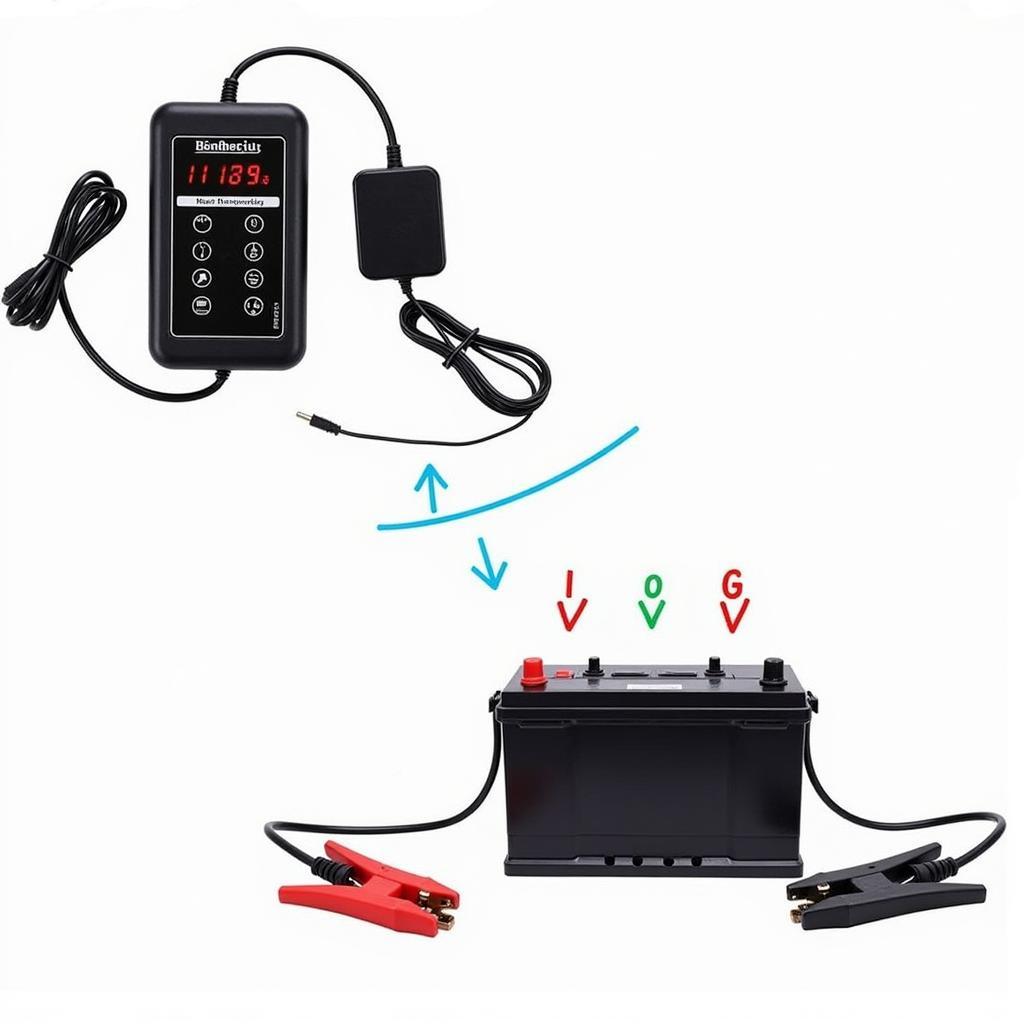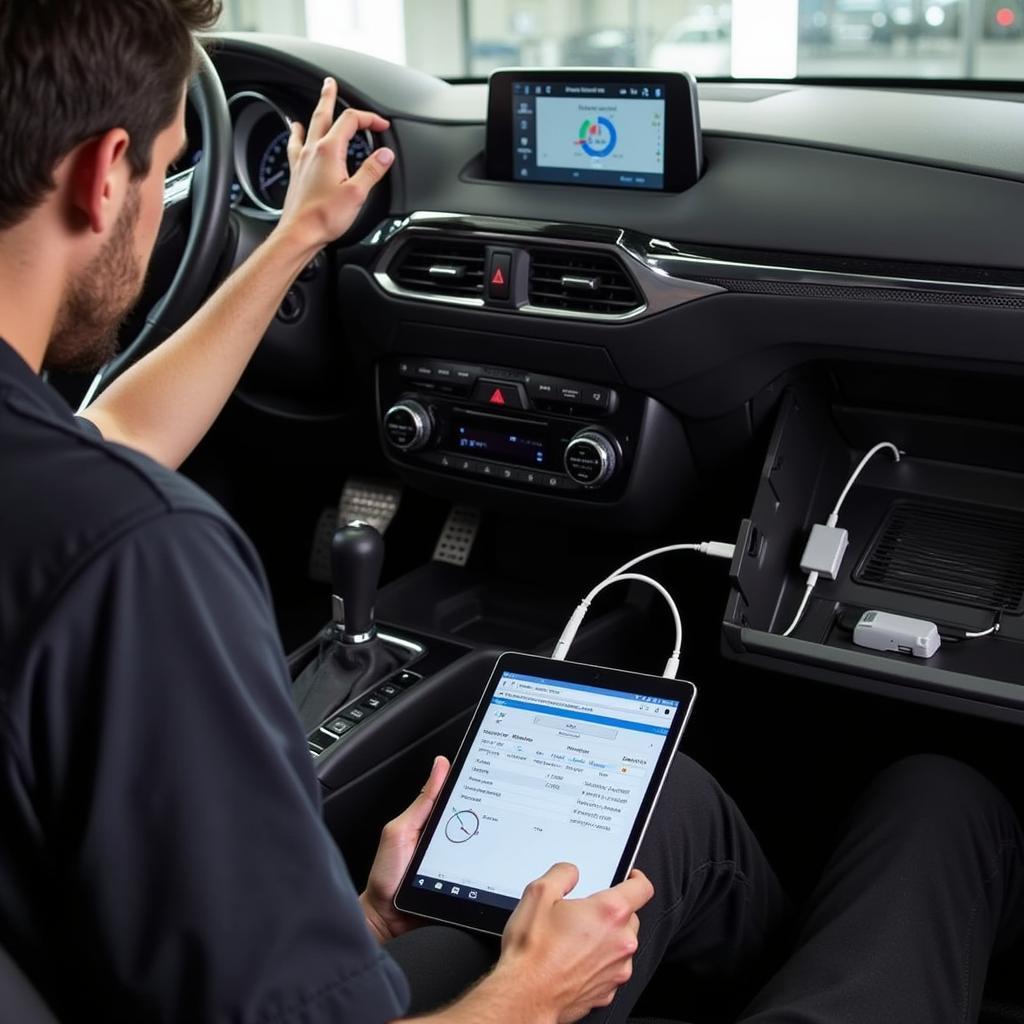The dreaded brake press warning light. A beacon of caution illuminating your dashboard, signaling something isn’t right with your vehicle’s braking system. Ignoring it is a recipe for disaster, as a malfunctioning brake system puts you and others at risk. This comprehensive guide dives deep into the common causes of a brake press warning light, empowering you to diagnose and address the issue head-on.
Understanding Your Vehicle’s Braking System
Before we delve into troubleshooting, let’s grasp the basics of how your vehicle’s braking system operates. At its core, it’s a hydraulic system reliant on brake fluid to transmit force when you press the brake pedal. This force activates the calipers, pushing brake pads against the rotors, effectively slowing down or stopping your vehicle.
Common Culprits Behind the Brake Press Warning Light
When the brake press warning light illuminates, it’s often accompanied by other symptoms like a soft or spongy brake pedal, unusual noises when braking, or a pulling sensation. Here are some frequent reasons why this warning light might grace your dashboard:
1. Low Brake Fluid Level
A leading cause of the brake press warning light is low brake fluid. As brake pads wear down, the brake fluid level naturally decreases. However, if you notice a significant drop in brake fluid level, it could indicate a leak.
Pro Tip from Mechanic Mike: “Never underestimate the importance of regular brake fluid checks. It’s a simple visual inspection that can prevent major headaches down the road.”
2. Worn-Out Brake Pads
Brake pads are designed to wear down over time. When they reach a certain thinness, a sensor triggers the brake press warning light. Continuing to drive with worn brake pads not only compromises your stopping power but also risks damaging the rotors, leading to costlier repairs.
3. Faulty Brake Caliper
Brake calipers house the pistons that push the brake pads. A seized or sticking caliper piston disrupts the even application of pressure on the brake pads, resulting in uneven braking and potential vehicle pulling.
4. Brake Fluid Leak
A brake fluid leak is a serious issue demanding immediate attention. Inspecting your brake lines, hoses, and connections for any signs of leaks is crucial. If you spot a leak, refrain from driving and contact a qualified mechanic immediately.
5. ABS (Anti-lock Braking System) Issue
Modern vehicles are equipped with ABS, which prevents wheels from locking up during hard braking, enhancing vehicle control. A malfunctioning ABS system, often indicated by an illuminated ABS warning light alongside the brake press warning light, requires professional diagnosis using a specialized scanner.
Troubleshooting the Brake Press Warning Light
While some issues necessitate professional intervention, there are a few things you can check yourself:
-
Check Your Brake Fluid Level: Refer to your owner’s manual to locate the brake fluid reservoir and check the fluid level. If it’s low, carefully top it off with the recommended brake fluid type. However, be aware that simply adding fluid won’t fix a leak or address the underlying cause.
-
Inspect Your Brake Pads: While not always easily accessible, especially for rear brakes, you can try to visually inspect your brake pads for wear. If they appear thin or you’re nearing the manufacturer’s recommended replacement mileage, it’s best to have them checked by a professional.
When to Seek Professional Help
If you’re uncomfortable troubleshooting or your initial checks don’t resolve the issue, it’s crucial to seek help from a qualified mechanic. They have the expertise and tools to diagnose and repair complex brake system problems safely and effectively.
Brake Press Warning Light FAQs
Q1: Can I drive with the brake press warning light on?
A: It’s highly discouraged. Driving with a compromised braking system puts you and others at risk. If the light comes on, pull over when safe and contact a mechanic.
Q2: How often should I change my brake fluid?
A: Refer to your owner’s manual for specific recommendations. However, it’s generally advised to have your brake fluid flushed and replaced every 2-3 years or as recommended by your mechanic.
Q3: How much does it cost to fix a brake press warning light issue?
A: The cost varies widely depending on the underlying cause. A simple brake fluid top-off might cost a few dollars, while a brake caliper replacement could cost several hundred dollars.
Q4: How do I know if my brake pads need replacing?
A: Aside from the warning light, signs include squealing or grinding noises when braking, a vibrating brake pedal, or a longer stopping distance.
Conclusion
Addressing the brake press warning light promptly is paramount for your safety and the longevity of your vehicle. By understanding the common causes and following the troubleshooting tips outlined in this guide, you can confidently approach this automotive challenge. Remember, when in doubt, err on the side of caution and consult a qualified mechanic. Your brakes are your lifeline on the road, so treat them with the utmost care.


